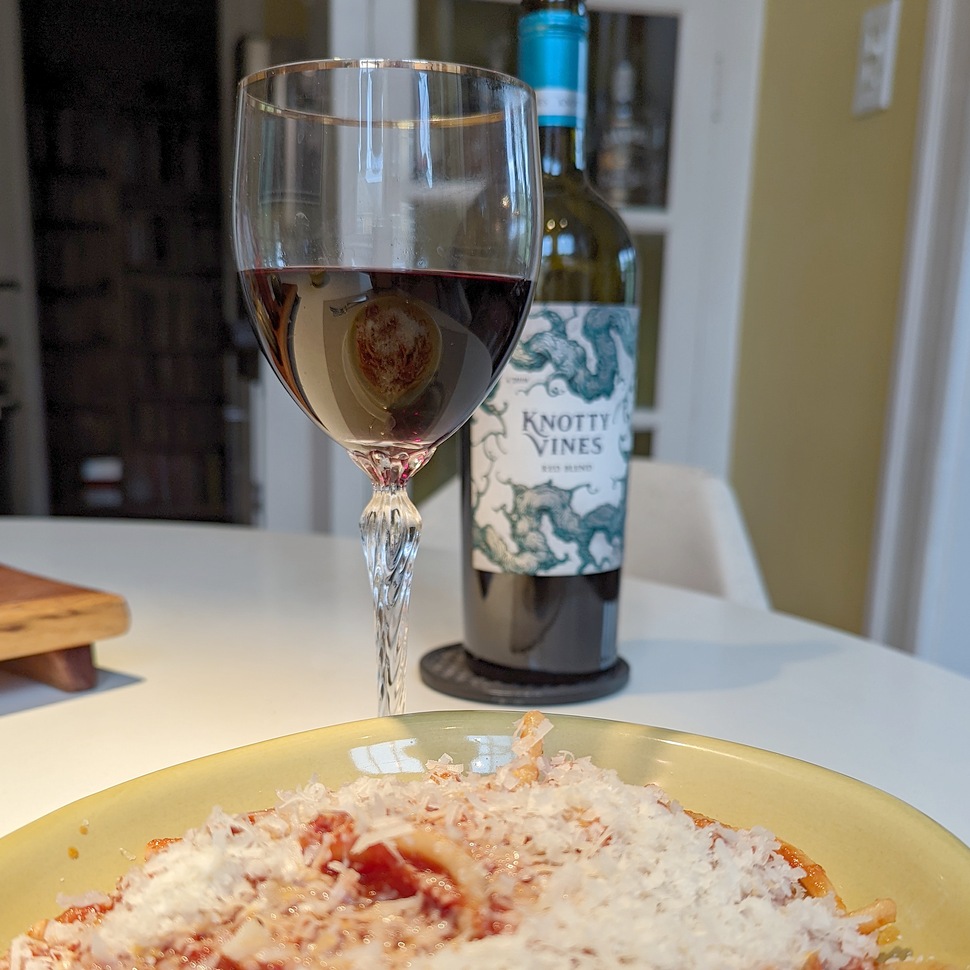
If ‶Knotty Vines″ sounds familiar, you might be a fan of old-vine Zinfandel from Rodney Strong Wines. A zin pioneer, the Sonoma producer created the name for its wines made from its oldest vines. The company has now resurrected the name as an umbrella for a new line of modestly priced wines aimed squarely at millennials. Moreover, they’ve put the company’s resident millennial winemaker, Olivia Wright (at right), in charge of making them.
Wright explained that Knotty Vines was conceived to be an approachable and affordable entry point for new wine consumers. ‶It’s a challenge for the whole industry,″ she said. ‶So I talk to family and friends about what they like. The word I hear a lot is ‘smooth,’ which translates to me as lower in tannin with soft fruit.″
The four wines in the portfolio—a red blend, Cabernet Sauvignon, Pinot Noir, and Chardonnay—share a lot of qualities. ‶They’re fruit-forward and bold,″ Wright said. ‶And they are definitely California wines. We think California has a terroir that’s all its own.” Toward that end, the wines are labeled as ‶California″ rather than specific viticultural districts. ‶There are different sources of fruit, really from all over the state,″ Wright confirmed. ‶It’s the first line of wines at Rodney Strong that we’ve bottled under the state appelation.″
That gives her flexibility to select fruit from different regions. While the Pinot Noir fruit hails from the Russian River AVA, the Cabernet fruit is mostly from Sonoma and Paso Robles. The Chardonnay is even more diverse, hailing from Sonoma, Monterey, and Santa Barbara. As part of making the wines accessible, they’re bottled under screw caps, an indicator that they’re made to be drunk young.
Some thoughts on tasting Knotty Vines wines
We started off with Pinot Noir 2019 — mainly because we were planning to grill some ‶Cured″ hamburgers and catch the Red Sox on TV. (For the burger recipe, see this post. ) Given that many California Pinot Noirs in the $12-$15 range are, shall we say, ‶subtle,″ we knew it was a risk that the food might overwhelm the wine. It didn’t. We told Wright that we liked the assertive black cherry fruit and the vanilla tang of French oak with the smoky, beefy burger. She laughed and explained, ‶I’m not a fan of wimpy Pinots. It’s too easy to lose all your flavor. The packaging is bold, and the wine should be bold.″

That same French oak—maybe in a lighter toast—rounds out the Knotty Vines Chardonnay 2018. This is a chard style that will never be mistaken for any other part of the world. It’s fruity and tangy, with all the lychee and green apple notes you could ask for, and an acidity that couldn’t be brighter if it had bubbles. The oak rounded out all the flavors without the ‶carpenter″ quality that makes so many California chards taste like vanilla extract. We found it a great complement to a shrimp and asparagus fideuà.
By comparison, the Cabernet Sauvignon 2018 is more restrained than we expected. Of course, we’ve been trained to expect bombastic Cabernet from the Napa Valley—the wines that made California’s name in the famous 1976 Judgment of Paris tasting. This is principally Sonoma cab with a medium body, easy fruit, and light ‶ungrippy″ tannins. Flavors leaned toward blackberry, cassis and black cherry. After tasting, we screwed the cap back on and made a fig and prosciutto pizza. The sweet fig jam and salty ham cut through the tannins beautifully.
Back to the company roots with the red blend
In some ways, the Knotty Vines Red Blend 2018 was the most intriguing of the four wines. ‶It’s my favorite,″ Wright told us. ‶It’s a nice playground to not have to follow guidelines. I can decide which lots play well together.″

The wine is a perfect example of a California red with Bordeaux cousins. Nearly a third of the fruit is Zinfandel — ‶an homage to where Knotty Vines came from,″ Wright said. ‶Also, zin is juicy and delicious. It really fits what people are looking for.″ The remainder of the blend is all Bordeaux grapes: Cabernet Sauvignon, Merlot, Malbec, and a hint of Petit Verdot.
It was our favorite of the reds as well. The flavors are as complex as the grapes, with a nose of brown sugar and black cherry, a soft and full mouth feel, and a velvety finish. We were surprised that the blend would be so full. We made bucatini all’amatriciana to play the sweet tomato and guanciale against the sheer juiciness of the wine. A little shaved aged pecorino gave it all a sharp counterpart.
All the Knotty Vines wines retail under $15, with some showing up in Massachusetts on sale for as low as $10. They’re a bargain at the price. In fact, we picked up a case of the chard as a summer sipper. For more information, visit www.knottyvines.com.
